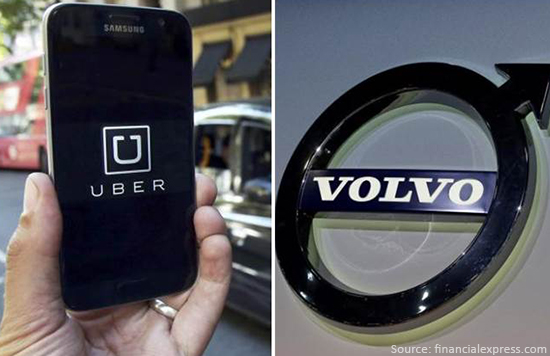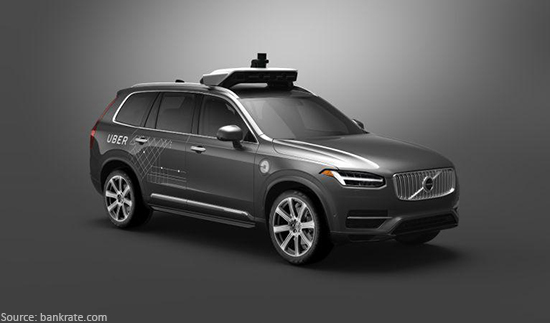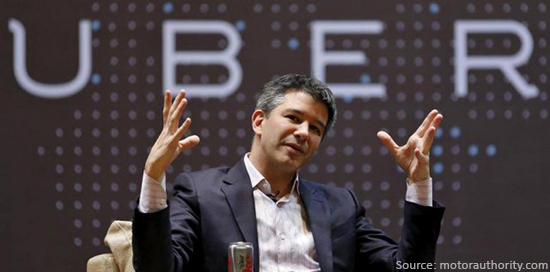Uber Launches Self-Driving Cars in Pittsburgh
Three months after the announced testing in the city, Uber is launching a fleet of self-driving cars in Pittsburgh. These cars will be hailed by real passengers for the first time, but humans aren’t giving up the wheel just yet. For safety, the cars will be manned by a driver (ready to take over if something goes wrong) and an observer. A computer will sit in the trunk recording map and journey data. The cars themselves will be an upgrade from the standard Prius, luxury Volvo XC90s fitted with dozens of sensors. These sensors, which use radar, lasers, cameras and GPS receivers, will help to ensure that these cars stay on track and avoid collisions. For the time being, autonomous journeys will be free.
Together Volvo and Uber have invested $300 million into a project that is the boldest implementation of autonomous driving yet, Volvo having delivered a handful of the 100 vehicles promised by the end of the year. Uber has set up shop just around the corner from Carnegie Mellon University, a world leader in robotics. The company has snapped up a number of researchers from the university and the wider industry to power its mission of having a fully autonomous car road ready by 2021.

This trial is the next step for autonomous driving, and seemingly the first of many. The launch is a blow to competitors Google and Tesla – neither company has commercially released viable autonomous vehicle. Tesla launched its autopilot feature to owners of its Model S cars back in October 2015, but there have been some speed bumps. The feature was labelled a public beta, and users were cautioned to keep their hands on the wheel at all times – a warning at odds with the hype that the company encouraged. Tesla is now fighting bad press in the aftermath of the death of Joshua Brown. Neither Brown nor his car noticed the tractor trailer crossing the highway ahead. It emerged the following day that Brown may have been watching a movie as his car drove itself.
Google has also experienced a few accidents but these have been less serious, in part due to the fact that the company limits its prototypes to 25 miles per hour. Uber has not had any collisions in Pittsburgh since they started testing in May, but according to engineering director Raffi Krikorian, this will change. “We’re interacting with reality every day,” he says. “It’s coming.”
The partnership between Uber and Volvo is not an exclusive one however, and Uber has plans to work with other companies. One of these companies is Otto, a startup founded earlier this year to research and implement driverless trucking. Engineers and researchers previously employed by other major tech companies (such as Tesla Google and Apple) are involved in the project to bring driverless trucks to market. Uber did not reveal the terms of this agreement, but an unnamed source privy to the deal named a price of about $680 million dollars. Otto employees will also collectively receive 20% of any profits Uber earns from building an autonomous trucking business.

Existing trucks can easily be outfitted with Otto’s technology, which will be adapted to create a laser detection (LIDAR) system that will guide Uber’s vehicles. Otto has nothing if not pedigree, founded by Don Burnette, Lior Ron, Claire Delaunay and Anthony Levandowski. These names might not be familiar to you, but they have been at the helm of some of the world’s most powerful technology companies, like Apple, Motorola and Google. Levandowski, who previously led self-driving efforts at Google, will now do the same for Uber. Two new R&D centers will open at the company to hasten technology development.
“We were really excited about building something that could be launched early” Levandowski said when asked by Bloomberg on why he left Google.
Many analysts have argued that true-self driving cars are a long way off, but Uber CEO Travis Kalanick obviously disagrees. He believes that data from the Uber app (where riders and drivers are registering approximately 100 million miles per day) can be used to quickly improve its navigation systems and self-driving mapping. “Nobody has set up software that can reliably drive a car safely without a human,” Kalanick said in an interview with Bloomberg. “We are focusing on that”.

Self-driving cars are inevitable, but they have the potential to harm as well as help. More a million people drive for Uber without being directly employed by the company, and many of these drivers have voiced their anger and frustration at the efforts being made to eliminate them as an expense. Speaking to the Guardian, one driver said “It feels like we’re just rentals. We’re kind of like placeholders until the technology comes out.”
Other drivers were not nearly as concerned, one driver stating that “If this is one of those avenues then that’s what it is. It doesn’t bother me at all.”
